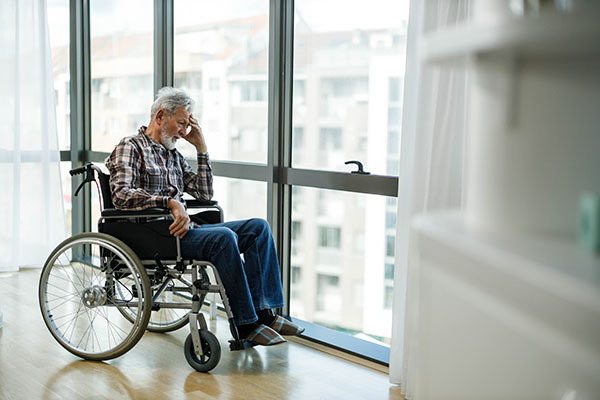
HICprevent
This award-winning blog supplements the articles in Hospital Infection Control & Prevention.
CMS Enacts Requirements for Infection Prevention in Nursing Homes
November 4th, 2022

By Gary Evans, Medical Writer
The Centers for Medicare & Medicaid (CMS) has finalized requirements in long-term care that call for at least a part-time infection preventionist (IP) in nursing homes and that emphasize Certification in Infection Prevention and Control (CIC) as the key credential of expertise.
IPs have been fighting for these measures for years, but it took a 100-year pandemic and the death of some 60,000 nursing home residents to finally break the inertia.
“Nursing homes were absolutely devastated by this pandemic over the past three years,” Morgan Katz, MD, MHS, of Johns Hopkins University, said recently at the IDWeek conference. “This really did affect the majority of nursing homes across the U.S. Over 90% had more than two outbreaks up until January of 2021, and 85% of nursing homes had outbreaks lasting more than five weeks.”
Infection control in long-term care is notoriously under-resourced, so if hospitals were hard-pressed by the pandemic it was a given nursing homes would be overrun by COVID-19. Katz consulted at nursing homes, and initially was shocked by the contrast with hospital IPs and epidemiologists, who, truth be told, weren't doing that much better in a lot of places.
“I would go to a long-term care facility and there would be maybe one half-trained infection preventionist who was dealing with a massive outbreak, that also had 100 other clinical responsibilities and no one to talk to,” she said.
Those days, hopefully, will be gone as the CMS regulations begin a sweeping culture change, but it will take time.
Including the CIC credential as a mark of expertise and qualification was a big win for the Association for Professionals in Infection Control and Prevention (APIC). The long-standing CIC certification for IPs was created and is administered by APIC’s certification board.
“That is the only certification right now that I know of that fits the criteria of CMS,” says Linda Dickey, RN, MPH, CIC, president of APIC. “It was the only example they gave, which is great because if we can move people who are coming into long-term care toward certification, that is going raise the bar on the expertise and competencies for these settings.”
The CMS said in a surveyors' guidance document that the “IP must be qualified by education, training, experience, or certification. The facility should ensure the individual selected as the IP has the background and ability to fully carry out the requirements of the IP based on the needs of the resident population, such as interpreting clinical and laboratory data. Examples of experience in infection prevention and control may include, but are not limited to, identification of infectious disease processes, surveillance and epidemiologic investigation, and preventing and controlling the transmission of infectious agents.”
APIC wanted a requirement for a full-time IP in nursing homes, but long-term care is in a cost-conscious recovery mode and there is also more demand than supply of IPs for all settings.
“I think that this part-time IP is a reflection of where we are right now with long-term facilities and also just the pipeline of workers,” Dickey says. “It’s a baby step, but it’s in the right direction. Just like in other healthcare professions, we are seeing people retiring in large numbers and we have lost others to burnout.
In addition to establishing an academic track for infection prevention, APIC is trying to improve the pipeline of new IPs by getting the Department of Labor to list it as an official and specific profession.
“Right now if you take a test to see what kind of career fits you, it doesn’t come up as option,” Dickey says.
Again, the CMS requires the IP to be at least part-time, leaving it up the facility and residential population to determine and define this to some degree. Part of this must be based on a healthcare-associated infection risk assessment conducted facility-wide at least annually. The facility must determine the risks identified and the resources needed by the IP program to prevent infections. This assessment includes resident census, characteristics, and the complexity of health services offered.
“The IP must have the time necessary to properly assess, develop, implement, monitor, and manage the IPC program for the facility, address training requirements, and participate in required committees such as [quality assurance],” the CMS states. “The IP must physically work onsite in the facility. He or she cannot be an off-site consultant or perform the IP work at a separate location such as a corporate office or affiliated short term acute care facility.”
For more on this story, see the next issue of Hospital Infection Control & Prevention.
Gary Evans, BA, MA, has written numerous articles on infectious disease threats to both patients and healthcare workers. These include stories on HIV, SARS, SARS-CoV-2, pandemic influenza, MERS, and Ebola. He has been honored for excellence in analytical reporting five times by the National Press Club in Washington, DC.
